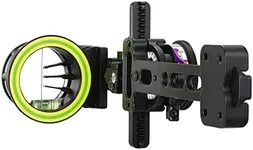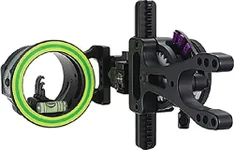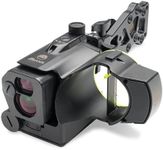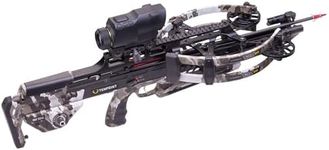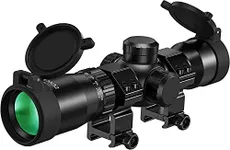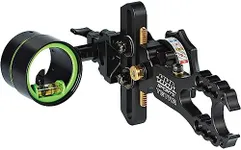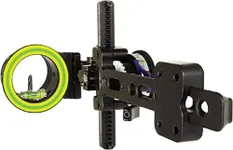Buying Guide for the Best Bow Scopes
Choosing the right bow scope can significantly enhance your archery experience, whether you're a beginner or an experienced archer. A bow scope helps you aim more accurately by providing a clear sight picture and various aiming points. When selecting a bow scope, it's important to consider several key specifications to ensure it meets your needs and preferences. Understanding these specs will help you make an informed decision and find the best fit for your shooting style and requirements.MagnificationMagnification refers to how much closer the target appears when looking through the scope. This is important because it can help you see your target more clearly and aim more precisely. Bow scopes typically have fixed or variable magnification. Fixed magnification scopes are simpler and often more durable, while variable magnification scopes offer more flexibility for different shooting distances. If you primarily shoot at a consistent distance, a fixed magnification scope might be sufficient. However, if you shoot at varying distances, a variable magnification scope could be more beneficial.
ReticleThe reticle is the crosshair or aiming point you see when looking through the scope. It is crucial because it helps you align your shot accurately. Reticles come in various designs, such as simple crosshairs, dots, or more complex patterns with multiple aiming points. For beginners, a simple reticle might be easier to use, while more experienced archers might prefer a reticle with multiple aiming points for different distances. Consider your skill level and the type of shooting you do when choosing a reticle design.
Lens QualityLens quality affects the clarity and brightness of the image you see through the scope. High-quality lenses provide a clearer and brighter view, which can be especially important in low-light conditions. Look for scopes with fully multi-coated lenses, as these coatings reduce glare and improve light transmission. If you often shoot in varying lighting conditions, investing in a scope with high-quality lenses can make a significant difference in your accuracy and overall shooting experience.
DurabilityDurability refers to how well the scope can withstand the rigors of use, including exposure to the elements and potential impacts. This is important because a durable scope will last longer and perform reliably in different conditions. Look for scopes made from robust materials like aluminum and those that are waterproof, fog-proof, and shockproof. If you frequently shoot outdoors or in challenging environments, a durable scope is essential to ensure it remains functional and accurate over time.
AdjustabilityAdjustability refers to the ability to fine-tune the scope for windage (left-right) and elevation (up-down) to ensure your shots are accurate. This is important because it allows you to compensate for environmental factors and maintain precision. Scopes with easy-to-use adjustment knobs or dials are preferable, as they allow for quick and precise changes. If you often shoot in different conditions or at varying distances, a scope with good adjustability features will help you maintain accuracy.
WeightWeight is the overall mass of the scope, which can affect the balance and handling of your bow. This is important because a heavy scope can make your bow feel unbalanced and harder to aim, while a lightweight scope can improve maneuverability. Consider the weight of the scope in relation to your bow and shooting style. If you prefer a lightweight setup for easier handling, look for scopes made from lightweight materials. However, ensure that the scope's weight does not compromise its durability and performance.



